Urethane Casting
Vacuum Casting with RJCmold means you benefit from no design limitations or restrictions, with guided support from dedicated designers and quality engineers, along with a rapid quote and industry-leading lead times.
RJCmold is the leader in urethane casting. Get quick production of high quality, reproducible parts with PLC control at a lower cost, all with a highly efficient shots per mold (from 1-500 parts).
urethane casting
Production grade parts with low-volume manufacturing and fast turnover
At RJCmold, our urethane casting operations are best suited for prototyping high-quality parts with a wide variety of properties that accommodate design complexities. Vacuum casting is our low-volume production technique used to materialize the most intricate designs in production-grade materials without the need for hard tooling. Our cast urethane service is speedy, cost-effective, and scalable for a production of 20 to 100 units for prototyping and alternative applications. We also work with a range of materials from Elastomers, ABS, HDPE, PC to Acrylic-like to meet your application and specifications without compromising product quality. Work with us to accelerate your product development cycles and move from prototype to functional testing parts in as quickly as 48 hours.
Benefits of Urethane Casting With Us
Urethane casting provides end-use, rigid plastic parts or rubber parts with production-level quality. Built without expensive and time-consuming hard tooling, our urethane casting process uses a 3D printed master pattern and silicone molds to deliver high-quality, short-run parts up to 30” long. The finished dimensions of urethane cast parts depend on the accuracy of the master model, part geometry, and casting material. In general, a shrinkage rate of + 0.15% is expected.
Our Urethane Casting Capabilities
|
SPECIFICATIONS |
|
|---|---|
| Maximum Mold Size: | 108 x 45 x 42 inches (2743 x 1143 x 1066 mm) |
| Lead Time: | As low as 3 days to first shot, depending on part geometry |
| Shot Per Mold: | 35+ shots per mold, depending on part geometry |
| Minimum Feature Size: | 0.02 inches (0.5 mm) for features 0.06 inches (1.5 mm) wall thickness, depending on part geometry |
| Best Achievable Tolerance: | 0.005 inches (0.127 mm) for first inch 0.003 inches (0.0762 mm) per lineal inch after first inch |
| Post-Processing options: | Smooth, Satin, Glossy / Polish, Custom Finishing, Paint, Grain |
Materials Offered
Urethane casting is conducive to many different types of polyurethane resins that can range from flexible like a rubberband, to rigid like a hard hat. The hardness of these resins are commonly measured using the Shore Hardness scale. Within the Shore Hardness scale there are 3 different levels of the Shore scale to measure hardness (or lack of).
Shore 00
Ranges from extra soft to medium hard.
- Shore 00 10 is extremely soft (like a gummy bear)
- Shore 00 30 is soft rubber (like a gel insert)
- Shore 00 60 is soft rubber (like a rubberband)
Shore A
Ranges from flexible rubbers to hard plastics.
- Shore A 20 is very soft (like a mouse pad)
- Shore A 40 is soft and rubbery (like a bottle nipple)
- Shore A 90 is hard rubber (like a cart wheel)
Shore D
Ranges from flexible rubbers to hard plastics.
- Shore D 10 is hard rubber (like a tire tread)
- Shore D 50 is harder rubber (like a shoe heal)
- Shore D 80 is hard plastic (like a hard hat)
Please note that for simplicity, RJCmold offers 4 main resins for casting: soft rubber, hard rubber, flexible plastic and hard plastic. If you have a specific hardness that you need please let us know and we will accommodate it.
Why RJCmold?
RJCmold has combined over 20 years of experience making patterns, silicone molds, and casting. The entire process is done 100 percent in-house. We print the master parts/patterns, sand and finish them, make the molds, cast them, and inspect them. While some of our parts are still hand poured, we primarily utilize two production grade MCP vacuum casting machines for parts with extremely fine details and challenging geometries. We also utilize pneumatic injection guns that prevent the introduction of air in to the material during the injection process. These processes produce parts that are virtually bubble free. our experienced team creates repeatable, high-quality parts that are free of air bubbles and surface imperfections. Our urethane cast parts are in many cases indistinguishable from injection molded parts with the similar strength and durability properties. We can cast in dozens of different materials and in numerous different colors including water clear. We also offer part finishing and painting services for any parts requiring this service.
RJCmold is an outstanding resource for any of your urethane casting projects. Contact us today for a free quote on your urethane casting project. You will be glad you did.
What is Urethane Casting?
The Basics Of Urethane Casting
Urethane casting provides end-use, rigid, flexible, and rubber parts with production-level quality. The urethane casting process uses a 3D-printed master pattern to create a silicone mold that delivers high-quality, short-run parts as an economical alternative to low-volume injection molding.
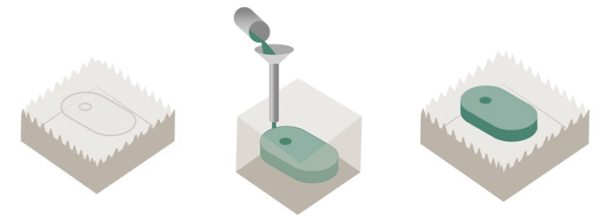
How Urethane Casting Works
Urethane casting is similar to injection molding in that it requires a tool with a cavity in the shape of the final part. The major difference is that urethane casting uses a “soft” mold made of silicone whereas injection molding using a “hard” metal mold that has been CNC machined. The drawback to urethane casting, then, is that the mold wears out more quickly. However, it is vastly more cost-efficient for low-volume and prototype plastic parts that require production-level quality and surface finishes.
The urethane casting process has 3 major steps:
In step one, a master pattern of the final part is made using an additive manufacturing process. Polyjet 3D or stereolithography (SLA) 3D printing processes are most often used due to their ability to produce high-resolution and naturally smooth finish parts. The master pattern is typically hand-finished to achieve optimal surface detail before the creation of the mold tool.
In step two, the 3D printed master pattern is encased in liquid silicone that cures around the pattern, with the silicone encapsulating all the features of the printed parts. When the mold cures, it is cut into distinct halves and the master pattern or 3D printed part, is removed. This leaves an internal cavity perfectly shaped like the part.
In the final step of the urethane casting process, liquid urethane or silicone is poured into the silicone mold, and the mold is then placed in a chamber to help remove air bubbles in the liquid material. For opaque parts, the chamber is typically pressurized. For clear parts, the chamber typically pulls a vacuum to mitigate any bubbles and increase clarity. Once cured, the silicone halves are separated and the newly formed part is removed. This process is repeated until the desired quantity is achieved.
Benefits Of Urethane Casting
Urethane casting has a low-cost and quick turnaround for high-quality plastic parts compared to injection molding or 3D printing. Where injection molding requires an expensive upfront investment for the machining of the mold, the silicone mold required for urethane casting is inexpensive and easy to produce. Additionally, while most 3D printing processes require extensive post-processing to get to a near-finished state, urethane cast parts come out of the mold ready to go. Urethane casting is an excellent choice for creating high-quality prototypes or low-volume production of rigid, flexible, clear, colored, or rubber-like plastic parts.
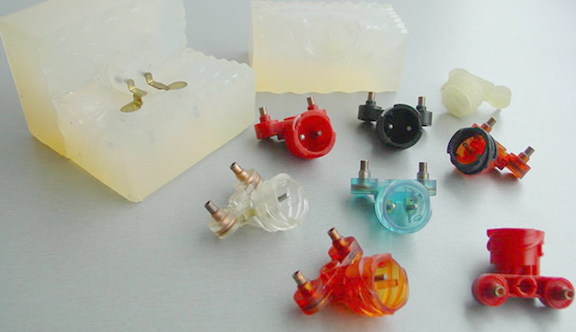
Applications of Urethane Casting
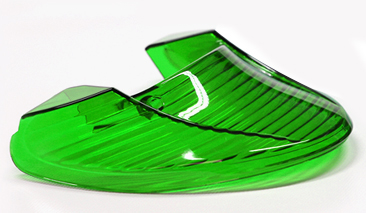
Low-Volume Production
Urethane cast parts are perfect for low-quantity production—when volumes do not justify investment in injection mold tooling—as well as for first run production parts, which can be completed weeks before production tooling is ready.
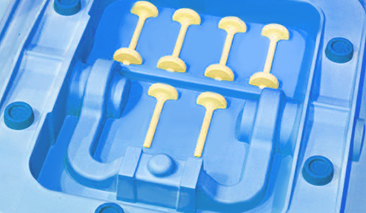
Advanced Prototyping
The urethane casting process and relatively inexpensive tooling involved makes it easy and economical to make any necessary design changes. Additionally, different materials can be used with the same mold, making it possible to test designs with a variety of materials.
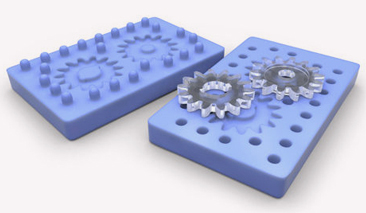
Market Testing
End-user functionality and a high-quality finish makes urethane cast parts ideal for consumer testing, user evaluation and concept models. Using the cast urethane process means that changes can be incorporated quickly for either further testing or market launch.
Contact Us About Your Urethane Casting Project
We are here to serve you and answer any questions you have about urethane casting and if it is right for your project. When you are ready to get started with your Urethane Casting project, contact RJCmold. Our experienced team will work with you to ensure the end results meet your specifications, deadline, and budget.

